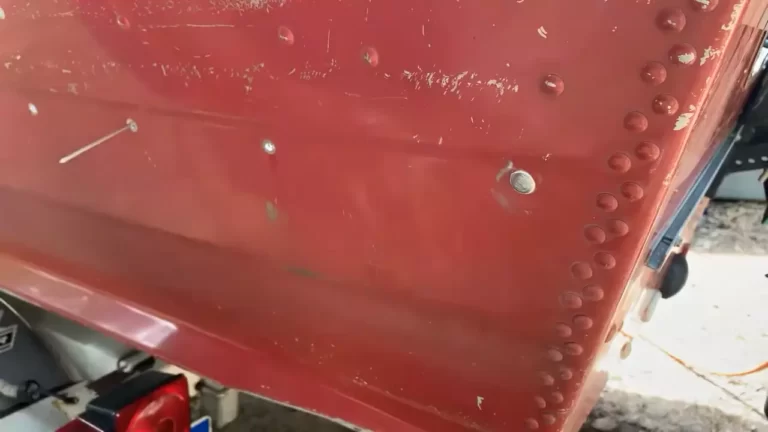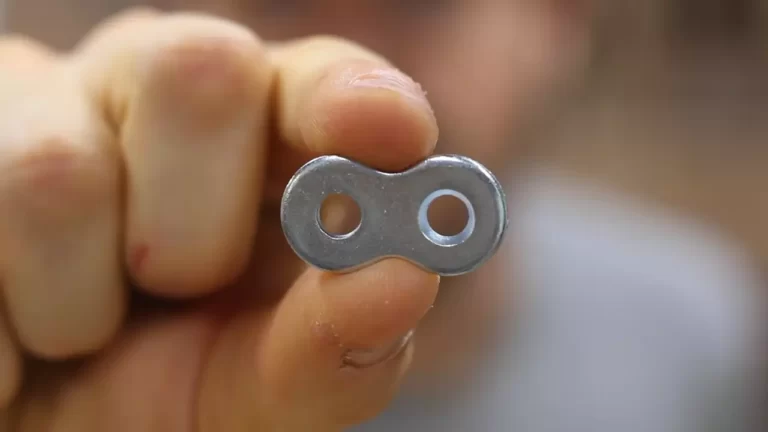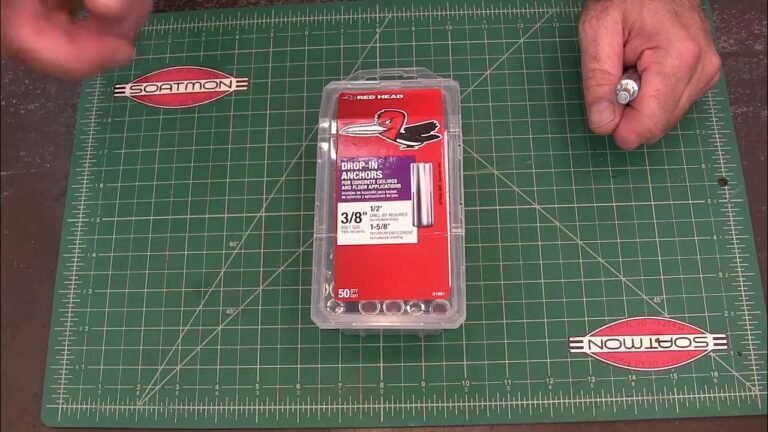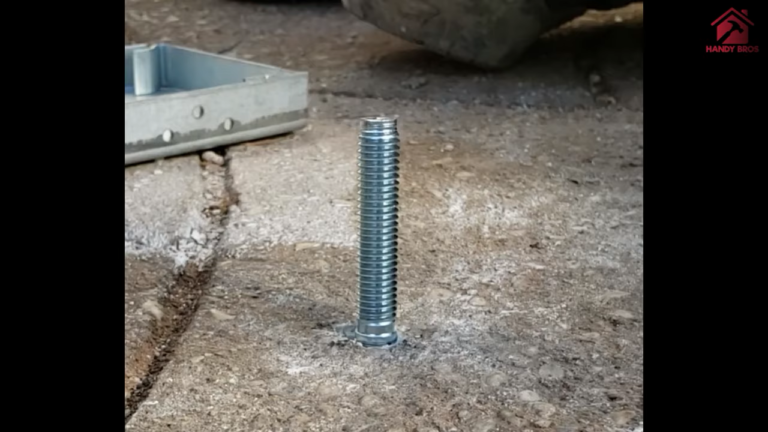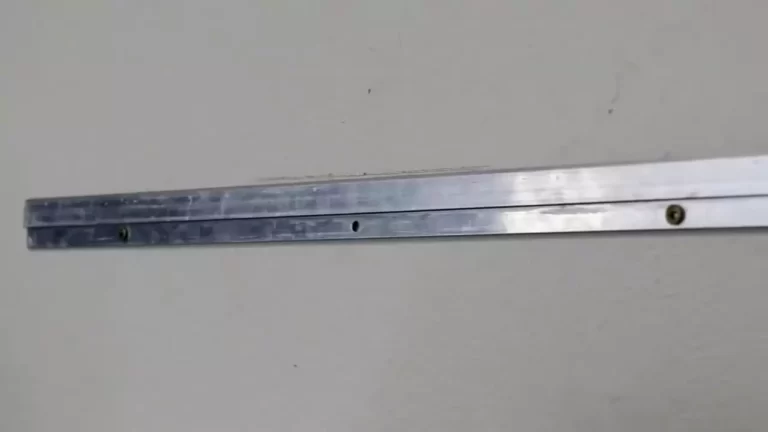How to Install Wall Anchors Without a Drill?
To install wall anchors without a drill, use adhesive wall anchors that don’t require any drilling into the wall. Here’s how you can easily install wall anchors without a drill.
Wall anchors are an essential part of hanging items securely on the wall, whether it’s a picture frame or a shelf. However, not everyone has access to a drill or wants to create holes in their walls. Luckily, there are alternative methods available for installing wall anchors without a drill.
We will guide you through the process of using adhesive wall anchors, which eliminate the need for drilling and provide a hassle-free solution. By following these simple steps, you can confidently hang your items on the wall without any major tools or alterations to your living space.
Traditional Wall Anchors
When it comes to installing wall anchors without a drill, traditional wall anchors offer a reliable solution. These anchors are designed to provide stability and strength, allowing you to hang objects securely on your walls without the need for drilling. Traditional wall anchors come in various types, including expansion anchors, plastic anchors, and toggle bolts. In this blog post, we will explore each of these options in detail, providing you with a comprehensive guide on how to install wall anchors without a drill.
Expansion Anchors
Expansion anchors are one of the most commonly used types of wall anchors. These anchors work by expanding within the wall, creating a firm grip. To install expansion anchors without a drill, follow these steps:
- Choose the appropriate size of expansion anchor based on the weight of the object you want to hang.
- Mark the location on the wall where you want to install the anchor.
- Using a hammer, gently tap the anchor into the marked spot on the wall.
- Once the anchor is flush with the wall, insert the screw into the anchor and tighten it using a screwdriver or a wrench.
- Ensure that the screw is tightly secured in the anchor, providing a stable support for your hanging object.

Plastic Anchors
Plastic anchors are another popular choice for wall installations. These anchors are lightweight and easy to install, making them a convenient option for smaller objects. Here’s how you can install plastic anchors without a drill:
- Select the appropriate size of plastic anchor based on the weight and size of the object you wish to hang.
- Mark the spot on the wall where you want to install the anchor.
- Using a hammer, gently tap the plastic anchor into the marked location on the wall.
- Insert the screw into the anchor, turning it clockwise until it is securely in place.
- Double-check the stability of the anchor by giving it a gentle tug.
Toggle Bolts
Toggle bolts are ideal for hanging heavier objects on walls without the use of a drill. These anchors consist of a bolt with wings that expand once inserted into the wall, creating a strong anchor point. Here’s how to install toggle bolts without a drill:
- Choose the appropriate size of toggle bolt based on the weight and size of the object you want to hang.
- Mark the desired location on the wall for the toggle bolt.
- Insert the wings of the toggle bolt through the marked spot on the wall and tighten the bolt using a screwdriver or a wrench.
- Ensure that the toggle bolt is securely in place by giving it a gentle tug.
Now that you know how to install traditional wall anchors without a drill, you can confidently hang objects on your walls without the hassle of drilling. Whether you choose expansion anchors, plastic anchors, or toggle bolts, these traditional wall anchors provide a reliable and secure solution for your hanging needs.
Innovative Wall Anchors
When it comes to hanging items on your walls, having the right tools is essential. However, not everyone has access to a drill or wants to go through the hassle of drilling into their walls. Luckily, there are innovative wall anchors available that allow you to securely hang objects without the need for a drill. In this article, we will explore three types of wall anchors that are quick and easy to install: adhesive anchors, self-drilling anchors, and molly bolts.
Adhesive Anchors
If you’re looking for a hassle-free way to hang lightweight items on your walls, adhesive anchors are the way to go. These anchors come in various sizes and are typically made from a strong adhesive material that can hold a significant amount of weight. The installation process is simple – all you need to do is clean the surface, peel off the backing, and firmly press the anchor against the wall. Allow the adhesive to cure for the recommended time before hanging your item.
Here are a few advantages of using adhesive anchors:
- They are suitable for a wide range of wall types, including drywall, painted walls, and tiles.
- Adhesive anchors don’t require any drilling or special tools, making them a convenient option for renters or those who don’t own a drill.
- They can be easily removed without leaving any marks or damage on the wall, making them ideal for temporary installations or frequent rearrangements.
Self-Drilling Anchors
When it comes to hanging items that require a bit more strength, self-drilling anchors are a fantastic choice. These anchors have a sharp, pointed tip that allows them to penetrate the wall surface without the need for pre-drilling. They are typically made from a durable material such as metal or plastic and can hold substantial weight.
Here’s how to install self-drilling anchors:
- Choose the desired location on the wall and mark it accordingly.
- Hold the anchor against the wall and use a screwdriver or power drill to turn it clockwise. The anchor will begin drilling itself into the wall.
- Continue turning until the anchor is flush with the wall surface.
- Insert the screw into the anchor and tighten it until secure.
Self-drilling anchors offer the following benefits:
- They are ideal for hanging items that are heavier or require more stability, such as shelves or mirrors.
- Self-drilling anchors provide a secure hold, ensuring that your items stay in place.
- They are quick and easy to install, saving you time and effort.

Molly Bolts
When you’re looking for maximum strength and stability, molly bolts are the go-to choice. These anchors consist of a metal sleeve with screws and spring-loaded wings. Molly bolts are specifically designed to hold heavy objects securely on hollow walls, such as drywall.
Follow these steps to install molly bolts:
- Drill a hole into the wall that matches the diameter of the bolt sleeve.
- Insert the bolt into the hole and use a screwdriver or power drill to tighten it.
- As you tighten the screw, the wings of the molly bolt will expand, providing a tight grip on the wall.
- Once secure, insert the screw into the bolt and tighten it until snug.
Here are some advantages of molly bolts:
- They offer exceptional strength and stability, making them ideal for hanging large mirrors, TVs, or heavy artwork.
- Molly bolts can be used on hollow walls where other anchors may not be suitable.
- They provide a long-lasting hold, ensuring that your items stay securely in place.
With these innovative wall anchors, you can confidently hang a variety of items on your walls without the need for a drill. Whether you choose adhesive anchors, self-drilling anchors, or molly bolts, each option provides a secure and convenient method for installing wall anchors without the hassle of drilling.
Assessing The Wall Material
Before you begin installing wall anchors without a drill, it’s crucial to assess the type of wall material you’re working with. Different wall materials require different techniques and tools to ensure a secure installation. In this section, we will discuss the three most common types of wall materials: Drywall, Brick or concrete, and Plaster. By understanding the characteristics of each material, you’ll be able to choose the right method for installing wall anchors without a drill.
Drywall
Drywall is a popular wall material found in most modern homes. It is relatively easy to work with and provides a smooth surface for painting or wallpapering. However, it is also a delicate material that requires extra care when installing wall anchors without a drill. Here are a few techniques you can use:
- Adhesive Wall Anchors: Adhesive wall anchors are a great option for lightweight items such as picture frames or small shelves. These anchors come with a strong adhesive that securely attaches to the drywall. Simply peel off the backing and press the anchor onto the desired spot on the wall.
- Screw-In Anchors: Screw-in anchors are another option for drywall installations. These anchors have a sharp point that allows them to be screwed directly into the wall without the need for a drill. However, it’s important to use caution and not over-tighten the anchor, as it may damage the drywall.
Brick or Concrete
Brick or concrete walls are commonly found in older buildings or outdoor spaces. These materials provide excellent durability and strength but can pose a challenge when it comes to installing wall anchors without a drill. Here are a few methods you can consider:
- Adhesive Anchors: Similar to drywall, adhesive anchors can be used on brick or concrete walls. These anchors often come in the form of adhesive pads or epoxy glue. Clean the surface of the wall, apply the adhesive to the back of the anchor, and firmly press it onto the desired location.
- Expansion Anchors: Expansion anchors are a suitable option for heavier items or items that need extra stability. These anchors require a bit more effort as they need to be hammered into a pre-drilled hole. Once inserted, the anchor expands and grips the surrounding brick or concrete, providing a secure hold.
Plaster
Plaster walls are commonly found in older homes and exhibit a unique character. However, they can be fragile and require special care when installing wall anchors without a drill. Consider the following methods:
- Patching Compounds: Patching compounds can be used to fill in the holes created when installing wall anchors in plaster walls without a drill. These compounds can be easily applied and smoothed over the hole, leaving the wall looking seamless. Before applying, make sure to clean the area and follow the manufacturer’s instructions.
By assessing the wall material and using the appropriate techniques, you can successfully install wall anchors without a drill. Whether you’re working with drywall, brick or concrete, or plaster, following these guidelines will ensure a secure and reliable installation.

Considering Weight Capacity
Before installing wall anchors without a drill, it’s crucial to consider the weight capacity of the anchor you choose. Understanding the load requirements and selecting the appropriate anchor type based on weight will ensure the stability and durability of your wall-mounted objects. By following these guidelines, you can confidently install wall anchors without a drill and enjoy a secure and reliable hold.
Understanding Load Requirements
When it comes to wall anchors, it’s essential to understand the load requirements. The weight capacity of an anchor refers to the maximum weight it can support. You must assess the weight of the object you plan to mount on the wall and choose anchors that can handle that weight. Ignoring load requirements can lead to anchor failure and potential damage to your walls. By taking the time to analyze the load requirements, you can avoid such risks and ensure the long-term stability of your wall-mounted items.
Choosing the Appropriate Anchor Type Based on Weight
Choosing the appropriate anchor type based on weight is vital to ensure a secure installation. Different wall anchors are designed to support varying weight capacities. Here are some popular anchor types and their weight limits:
| Anchor Type | Weight Capacity |
|---|---|
| Metal Toggle Bolts | Up to 100 pounds |
| Plastic Self-Drilling Anchors | Up to 50 pounds |
| Molly Bolts | Up to 75 pounds |
By selecting the appropriate anchor type based on weight, you can ensure that your wall-mounted objects are adequately supported. It is important to note that weight capacities may vary among different anchor manufacturers, so always refer to the specific product’s packaging or instructions for accurate load information.
Once you have determined the weight of your object and selected the appropriate anchor type, you can move forward with the installation process. Remember to carefully follow the manufacturer’s instructions for each type of anchor to ensure proper installation and optimal performance.
With a clear understanding of load requirements and the right anchor type, you can confidently install wall anchors without a drill and securely mount objects to your walls. Prioritizing weight capacity will help you avoid any potential damage and give you peace of mind knowing that your belongings are firmly and safely anchored. So go ahead and transform your walls into functional and aesthetically pleasing spaces without the need for a drill!
Evaluating Installation Difficulty
When it comes to hanging items on your walls, using wall anchors can provide the extra support needed to ensure the items stay securely in place. However, the thought of drilling holes in your walls may seem daunting, especially if you don’t have access to a drill. Fortunately, there are alternative methods for installing wall anchors without the need for a drill. In this section, we will discuss the skill level required and the tools needed for installation, making it easier for you to evaluate the installation difficulty.
Skill Level Required
Installing wall anchors without a drill generally requires basic handyman skills. If you are comfortable working with simple hand tools and have experience using a hammer, you should be able to handle this installation on your own. Even if you are a beginner, with a little patience and practice, you can successfully install wall anchors without a drill. It’s always a good idea to start with a small and less critical project to gain confidence before moving on to larger and more important installations.
Tools Needed for Installation
The good news is that installing wall anchors without a drill doesn’t require a long list of specialized tools. In fact, you probably already have most, if not all, of the required tools at home. Here’s a list of the essential tools you’ll need:
- Wall anchors
- Screwdriver
- Hammer
- Measuring tape
- Pencil
- Level
With these tools in hand, you’ll be well-prepared to tackle the installation of wall anchors without a drill.
By considering the skill level required and gathering the necessary tools, you can evaluate the installation difficulty and make an informed decision about whether you feel comfortable installing wall anchors without a drill. Remember, practice makes perfect, so don’t be discouraged if your first attempt is not perfect. With time and experience, you’ll become more proficient in this handy DIY skill.

Method 1: Using Adhesive Anchors
In this method, we will guide you through the process of installing wall anchors without using a drill by utilizing adhesive anchors. This method is perfect if you don’t have access to a drill or if you’re worried about damaging your walls. Follow these simple steps to get started:
Preparing the surface
Before applying the adhesive anchors, it’s important to ensure that the surface is clean and dry. Use a cloth or sponge to wipe away any dust or debris. This will help the adhesive to bond effectively with the wall.
Applying the adhesive
The next step is to apply the adhesive to the wall. Start by removing the backing from the adhesive anchor. Press the anchor firmly against the wall, making sure it is level and aligned with your desired position. Hold it in place for a few seconds to allow the adhesive to set.
Inserting the screw
Once the adhesive anchor is securely attached to the wall, it’s time to insert the screw. Start by placing the screw into the anchor, making sure it is aligned properly. Use a screwdriver or a power drill with a screwdriver bit to turn the screw clockwise, driving it into the anchor. Be sure not to overtighten as it may cause damage to the anchor or the wall.
Repeat these steps for each wall anchor you need to install. Once the adhesive has fully cured, you will have a secure and sturdy anchor without the need for a drill.
Remember, this method works best for lightweight items such as pictures, small shelves, or decorative items. If you’re planning to hang heavier objects or fixtures, it’s recommended to use traditional wall anchors installed with a drill for maximum stability.
Method 2: Using Self-Drilling Anchors
Method 2: Using Self-Drilling Anchors
When it comes to installing wall anchors without a drill, self-drilling anchors can be a convenient option. These anchors are designed to eliminate the need for pre-drilling pilot holes, making the installation process much easier. Follow these steps to install self-drilling anchors:
Marking the spot
Before you start, make sure to mark the spot on the wall where you want to install the anchor. Use a pencil or a marker to create a small dot at the desired location. Ensure the dot is clearly visible and accurate for proper anchor placement.
Drilling a pilot hole with a hammer and nail
Next, you’ll need to create a pilot hole for the anchor’s tip using a hammer and nail. Position the tip of the nail directly on the marked spot on the wall and tap it gently with the hammer. The goal is to create a small indentation in the wall surface where the anchor’s tip will penetrate.
Inserting the self-drilling anchor
Once you have the pilot hole, it’s time to insert the self-drilling anchor. Take the anchor and place it on the wall, aligning the anchor’s tip with the indentation you made with the hammer and nail. Apply firm pressure and begin twisting the anchor clockwise using your hand or a screwdriver. As you twist the anchor, it will start drilling itself into the wall, creating a secure hold.
Make sure not to overtighten the anchor, as it may damage the wall or cause the anchor to break. Once the anchor is securely in place, you can hang your desired item on it.
Method 3: Using Molly Bolts
One effective way to install wall anchors without a drill is by using Molly bolts. Molly bolts are heavy-duty anchors that provide excellent support for hanging items on drywall, plaster, or wood surfaces. Here’s how you can use Molly bolts to securely hang objects on your walls:
Preparing the hole
Before inserting the Molly bolt, you need to prepare the hole. Here’s how:
- Choose the right size of Molly bolt for your project. The size and weight of the object you’re hanging will determine the size of the Molly bolt you’ll need.
- Place a mark on the wall where you want to install the anchor. Make sure to use a level to ensure the mark is straight.
- Use a screwdriver or a nail to create a small pilot hole at the marked spot. This will provide a starting point for the Molly bolt.
Inserting the Molly bolt
Once the hole is prepared, you can proceed to insert the Molly bolt. Here’s how:
- Hold the Molly bolt by the collar and insert it into the pilot hole you created earlier.
- Gently tap the bolt into the hole using a hammer until it is flush with the wall surface. Be careful not to damage the drywall or plaster.
Expanding the bolt
The next step is to expand the Molly bolt to secure it in place. Here’s how:
- Using a screwdriver, turn the screw on the Molly bolt clockwise. This will cause the wings of the bolt to expand behind the wall, providing a strong grip.
- Continue turning the screw until the Molly bolt feels secure and does not move when pressure is applied.
With the Molly bolt properly installed, you can now hang your desired object on the wall. Remember to check the weight capacity of the Molly bolt and ensure it can support the weight of the item you’re hanging.

Check For Electrical Wires Or Pipes
When it comes to hanging objects on your wall, using wall anchors is essential for stability and security. However, not everyone has access to a drill or wants to go through the hassle of drilling into their walls. The good news is, there are alternative methods to install wall anchors without a drill. In this blog post, we will discuss one important step in this process, which is checking for electrical wires or pipes before proceeding. Safety should always be a top priority when working on any home improvement project, so it is crucial to take the necessary precautions. Let’s dive in and learn how to check for electrical wires or pipes before installing wall anchors without a drill.
Using a stud finder
Before you begin the installation process, it is important to determine the position of any electrical wires or pipes behind your wall. This is where a stud finder comes in handy. A stud finder is a device that is designed to detect the location of studs, electrical wires, and pipes behind the walls.
To use a stud finder:
- Turn on the stud finder and hold it against the wall.
- Slowly move the stud finder along the surface of the wall.
- Pay attention to any signals or alerts from the stud finder that indicate the presence of electrical wires or pipes.
If the stud finder detects any electrical wires or pipes, mark the area on the wall using tape or a pencil. This will serve as a reminder to avoid drilling or installing wall anchors in that specific spot. By taking this simple step, you can prevent any damage to the electrical wiring or pipes, ensuring the safety of both yourself and your home.
Turning off the power source
Once you have located any electrical wires, it is essential to turn off the power source before proceeding with the installation of wall anchors. This step is crucial to prevent any electrical accidents or injuries while working on your walls.
To turn off the power source:
- Locate the main electrical panel in your home.
- Open the panel door.
- Identify the circuit breaker associated with the area where you will be installing the wall anchors.
- Flip the corresponding circuit breaker switch to the “off” position.
Once the power source is turned off, you can proceed with the installation process confidently, knowing that you have taken the necessary precautions to ensure your safety.
In conclusion, checking for electrical wires or pipes is an important step in installing wall anchors without a drill. By using a stud finder and turning off the power source, you can avoid potential accidents and ensure a safe installation process. Taking the time to check for electrical wires or pipes before beginning can save you time, money, and potential headaches down the road.
Test The Anchor’S Stability
Once you have successfully installed the wall anchors without a drill, it is crucial to test their stability to ensure they are secure enough to hold the weight of the object you plan to hang. This step is important as it helps you avoid any accidents or damage caused by a weak anchor.
Applying pressure
To test the stability of the anchor, apply firm pressure on the area where the anchor is installed. This will simulate the weight or force that the anchor will experience when the object is hung. Make sure to press evenly and steadily to determine if the anchor holds up under pressure.
Checking for any movement or loosening
While applying pressure, pay close attention to any movement or loosening of the anchor. If you notice any signs of the anchor shifting or becoming loose, it indicates that the anchor may not be secure enough. In such cases, it is important to take immediate action to prevent any accidents or damage.
Here are a few things to consider when checking for movement or loosening of the anchor:
- Inspect the area around the anchor for any visible signs of movement, such as cracks in the wall or gaps between the anchor and the wall.
- Gently wiggle the object that the anchor is supporting to see if it feels stable or if there is any noticeable movement.
- If applicable, use a level to ensure that the object is straight and aligned properly.
By closely examining these factors, you can determine whether the anchor is secure and capable of holding the weight of the object without any issues.
Remember, it is always better to be safe than sorry when it comes to hanging heavy objects on your walls. Testing the stability of the anchor ensures that you have taken the necessary precautions to prevent any accidents or damage. So, take a few extra moments to test your anchors and have peace of mind knowing that your belongings are safely mounted on your walls!
Using Anchors For Heavier Objects
When it comes to hanging heavier objects on your walls, using wall anchors becomes crucial for providing the necessary support. These anchors are specially designed to distribute the weight evenly and prevent any damage to your walls. In this section, we will explore how you can install wall anchors without a drill for heavier objects.
Reinforcing with Additional Anchors
One technique for ensuring the stability of heavier objects is to reinforce the anchor installation with additional anchors. By using multiple anchors, you can distribute the weight more evenly and increase the overall strength of the installation. To do this, follow these steps:
- Identify the location where you want to hang your object.
- Choose an appropriate anchor type that can bear the weight of your object. Plastic wall anchors or toggle bolts are popular choices for heavier items.
- Insert the first anchor into the wall according to the instructions provided. Make sure it is securely fastened.
- Measure the distance to the neighboring anchor point, ensuring it is within the weight-bearing capacity of the anchors.
- Repeat the installation process for the second anchor, making sure it is aligned with the first anchor.
- Test the stability of the installation by gently pulling on the anchors. If they are securely in place, you can proceed to hang your object.
Distributing Weight Evenly
Another critical aspect of hanging heavier objects without a drill is to distribute the weight evenly. This will prevent any undue stress on a single anchor point and minimize the risk of damage to your walls. Here are a few tips to achieve this:
- Use a level tool to ensure that your anchors are installed at the same height and align perfectly.
- If your object has multiple hanging points, make sure to distribute them evenly across the anchors.
- Consider using hanging hardware that allows for adjustable height or position to achieve proper weight distribution.
By distributing the weight evenly and reinforcing your anchor installation with additional anchors, you can confidently hang heavier objects on your walls without the need for a drill. These steps will not only protect your walls from damage but also provide a secure and durable installation.
Frequently Asked Questions For How To Install Wall Anchors Without A Drill
How Can I Install Wall Anchors Without Using A Drill?
To install wall anchors without a drill, you can use alternative methods such as adhesive anchors, anchor screws, or toggle bolts. These options are suitable for lightweight items or where drilling is not possible or desired, but it’s important to choose the right type of anchor to match your wall surface and the weight of the object you’re hanging.
What Are Adhesive Anchors And How Do They Work?
Adhesive anchors are a type of wall anchor that uses adhesive to attach objects to the wall. They are easy to install and work well on smooth surfaces like tiles or glass. To use adhesive anchors, simply apply the adhesive to the anchor and press it onto the wall.
Allow the adhesive to cure before hanging any objects.
What Are Anchor Screws And How Do They Work?
Anchor screws are a versatile option for installing wall anchors without a drill. They have sharp, self-tapping threads that allow them to be screwed directly into the wall. Anchor screws are suitable for medium-weight items, and they work well on drywall, plaster, or wood surfaces.
Use a screwdriver or a power drill with a screwdriver bit to drive the anchor screws into the wall.
Conclusion
To sum up, installing wall anchors without a drill can be a simple and effective solution for those who lack the necessary tools or prefer a more convenient method. By following the steps outlined in this guide, you can secure your wall hangings and decorations without causing any damage.
Whether you live in a rented space or prefer a drill-free approach, these techniques offer a practical alternative. So, go ahead and give it a try – you’ll be amazed at how easy it can be to anchor your items securely!


